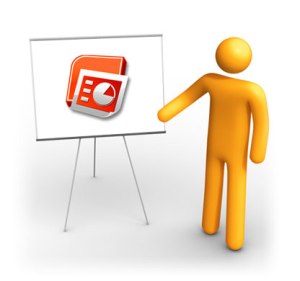 As a business trainer, I spend a lot of time working in Microsoft PowerPoint. It is the go-to tool for presentations, training, and general briefing platform, for many different reasons. It is easy to use, has many useful features, and is generally accepted as one of the best presentation tools for many different venues. The slide-based presentation method is great for showing step-by-step processes, breakdowns of structures or reports, and providing overviews of topics from the simple to the complex. Using these features can make the difference between a clumsy slide show and a great presentation.
As a business trainer, I spend a lot of time working in Microsoft PowerPoint. It is the go-to tool for presentations, training, and general briefing platform, for many different reasons. It is easy to use, has many useful features, and is generally accepted as one of the best presentation tools for many different venues. The slide-based presentation method is great for showing step-by-step processes, breakdowns of structures or reports, and providing overviews of topics from the simple to the complex. Using these features can make the difference between a clumsy slide show and a great presentation.
Microsoft provides their own tips for making effective presentations. In my own experience, when using PowerPoint for a presentation (or “slide deck” as some call it), simple is better. But there is a clear difference between simplicity and lack of function or form. You want to make sure that:
- Your information on the slide show is clear, concise, and pointed, but not so vague that it becomes useless.
- Screen shots or images must be sharp and easily visible to a room of viewers that might be sitting 40 feet away.
- Use colors that are starkly contrasting and can be read on a projector or large screen.
- Avoid leaving a ton of white (negative) space on slides, as it not only looks bad, but it shows that you might be missing important information (even if you are not).
- Feel free to use slide transitions and animations for interest, but in moderation. “Shiny” doesn’t necessarily equate to “good”.
- Keep the number of slides to a minimum to shorten the time needed for the presentation.
Here are some bullets about using bullets in slide shows:
- Avoid using full sentences. Summarize points using quick phrases and speak to the points in full sentences. (Appeal to both auditory and visual learners)
- Your bullet point should be no more than two to three lines, depending on the width. Audiences need to be able to read it quickly and then pay attention to you while you’re speaking for elaboration on what they just read.
- Some people are against this, but use basic animations to bring in your bullets one at a time, on command, in the final presentation. If you have a slide of 5 or 6 bullets, you don’t want the audience reading bullet 4 while you’re still talking about bullet 1.
Even though we’ve talked about Delivering training, when it comes to presenting PowerPoint materials, I’ve got some more bullets:
- Use a remote clicker or presenter, rather than standing in front of the computer keyboard. I know, I know… you feel comfortable being able to see the material as it goes by. Use a printout of the slides or note cards to help you, rather than hiding behind the computer.
- Don’t spend more than 20-30 seconds on a single bullet (unless a follow-up conversation or tangent question is warranted and relevant). You’re not there to ramble.
- If you’re using screenshots in a presentation, make sure you point out what is the necessary focus of this picture, either with a laser pointer or your own hand.
- Finally… PLEASE, PLEASE, PLEASE do not read directly from the PowerPoint slides!!! You do not want to insult your trainees by assuming they can’t read on their own. You will also lose precious credibility and motivation on the part of the students. If you’re going to do that, you might as well just email them the presentation and not waste your time.
Keeping to these simple rules can make a huge difference in your presentation skills. A great PowerPoint presentation can be used as an effective teaching tool, but it can also show your knowledge of the subject and give you the platform to get through to your trainees. For more information, I find the University of South Carolina’s tips to be a useful guide.
Photo credit: PowerPoint Templates Design Tips
